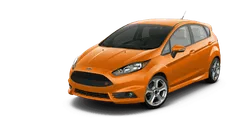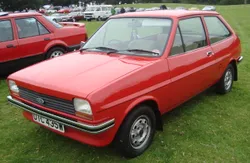

Ford Fiesta - Ford Fiesta MK1 Generations
Explore the various generations of Ford Fiesta, including the iconic Ford Fiesta MK1. Discover the unique features and history of these remarkable cars in Portugal.
The Ford Fiesta Mk1, launched in 1976, represented a significant milestone in the automotive industry and was part of the growing trend towards compact cars in the 1...
Technical Specifications
Select Version
Dimensions
Engine
Driving
Others
History and Features
Mycarro AI
Apr 27, 2025
Introduction to the Mk1 Fiesta
The Ford Fiesta Mk1, launched in 1976, represented a significant milestone in the automotive industry and was part of the growing trend towards compact cars in the 1970s. Designed by the Ford of Europe team, the Fiesta quickly garnered attention for its innovative approach to design, engineering, and positioning in the marketplace. The Mk1 Fiesta was not just a car; it was a response to the changing needs of consumers and reflected the economic environment of the time.
Design and Features
When it came to design, the Mk1 Fiesta embodied the principles of function merged with style. Its compact hatchback shape was both practical and appealing, catering to urban drivers who valued efficiency and ease of parking. Available in a variety of colors with a two-door or four-door layout, the Fiesta’s design was modern yet understated, setting the standard for many hatchbacks that followed. The interior was functional, featuring simple instrumentation that prioritized ease of use over clutter, which resonated well with young drivers and first-time car buyers.
Performance and Engine Options
Ford offered the Fiesta Mk1 with a range of engines, reflecting its adaptability to different markets and preferences. The initial models featured a 956 cc four-cylinder engine, which was quite economical and aligned with the fuel efficiency demands of the era. As the Mk1 evolved, Ford introduced a more powerful 1.1-liter engine option and a sporty 1.6-liter version, which enhanced the invigorating driving experience. This range of engines allowed the Fiesta to appeal to both the practical-minded consumers and those looking for a bit of sport in their daily drives.
Market Impact and Reception
Upon its release, the Ford Fiesta Mk1 was met with enthusiasm in Europe, quickly establishing itself as one of the best-selling cars in the region. Its affordability and efficiency were key factors in its popularity, particularly during the energy crises of the 1970s. The car's appeal was not limited to just economic conditions; it gained a reputation for reliability, making it a favorite among families, young drivers, and even fleet operators. The combination of affordability and practicality meant that the Fiesta was often seen as a sensible choice for a first car.
Innovations and Technology
The Mk1 Fiesta wasn’t just notable for its design and performance; it was also a pioneer in various technological aspects. The car was one of the first in its class to incorporate front-wheel drive technology, which provided better handling and maneuverability compared to its rear-wheel drive counterparts. Additionally, the Fiesta was equipped with a unique “expert driver” seat position that offered improved visibility and comfort, showcasing Ford's commitment to innovation and driver-centric design.
Legacy and Cultural Impact
As the years went by, the Mk1 Fiesta left an indelible mark on automotive culture. It wasn't just a means of transport but became a symbol of youthful freedom and adventure. Its success spurred Ford to develop future Fiesta generations, each building on the foundation established by the Mk1. The Fiesta’s race variant, the XR2, elevated its status within the performance community, leading to a cult following that persists to this day.
Conclusion
In summary, the Ford Fiesta Mk1 is much more than a car; it is a testament to the evolution of automotive design and consumer needs. It combined practicality, efficiency, and style in a way that resonated with the era and continues to influence compact car design and engineering. As we look back on the legacy of the Mk1, it serves as a reminder of how a single model can change perceptions and set benchmarks for the automotive industry, making it an iconic part of driving history.
